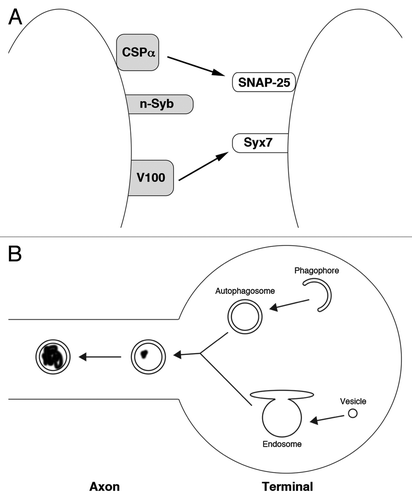Figures & data
Figure 1. A model for endosomal regulation of neuronal longevity. (A) Neuron-specific factors regulate endosome-vesicle fusion. The SNARE proteins n-Syb, SNAP-25, and Syx7 directly control membrane fusion between neuronal endosomes and vesicles. CSPα is a chaperone that maintains the stability of SNAP-25. V100 binds to Syx7 and is required for fusion through a currently unclear mechanism. Neuron-specific proteins are gray. (B) Endosomes are required for the maturation of neuronal autophagosomes. Phagophores form and engulf cytoplasm, becoming autophagosomes, in nerve terminals. In order to mature, autophagosomes first fuse with endosomes, acquiring proteases and acidification machinery. Then, autophagosomes enter the axon and begin retrograde transport to the soma. As they move, autophagosomes begin to degrade their contents (degraded material is shown black material inside the autophagosome).
